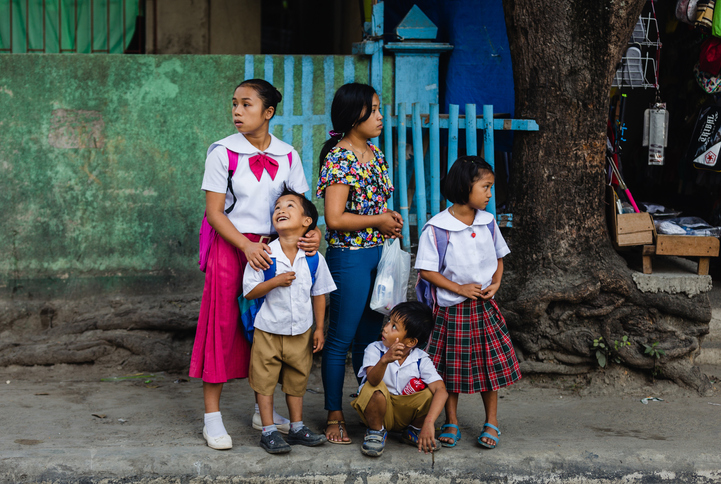Philippines’ higher education ‘more unequal despite reforms’
Philippines’ HE ‘more unequal despite reforms’ Times Higher Education


Higher Education Inequality in the Philippines

Despite efforts to reduce higher education inequality in the Philippines, the divide has grown over the past half-century – with many low-income learners dropping out before obtaining degrees or failing to make it to university at all, according to a study.
Economic Class and Educational Attainment
Karol Mark Ramirez Yee, a faculty member at Ateneo de Manila University’s School of Education and Learning Design, examined data from 1950 to 2015 to establish how social and economic class has affected educational attainment in the country. He found that despite “sustained expansions” of higher education over the six decades, inequalities widened and persisted at 20 percentage points since the 1980s.
Government Reforms and College Destinations
Government reforms over successive administrations, including the introduction of free secondary education in 1989, have made it easier for those from the lowest income groups to attend university. Yet these changes “did little to alter the trends in college destinations”, with wealthier students still far better represented at “high status” institutions, including a sizeable number of private universities, which are unaffordable to many Filipinos.
Dr. Yee, who is also the executive director of the Second Congressional Commission on Education – a government body evaluating challenges in the sector – said his study sheds light on when and why students leave education.
Identifying Inequalities
“The intention [is] to identify where inequalities emerge…We’re putting our eggs in the HE basket, but unless we ensure completion of secondary education, we’ll never ensure completion of university,” he said.
Factors Leading to Dropout
Many girls quit school because of early pregnancy and marriage, Dr. Yee explained. For boys, disengagement was a key factor causing them to drop out, he said, linking their disaffection to a lack of early competency in maths and reading.
“After all, how could you be engaged…if you can’t read or comprehend what you’re studying?” he asked.
Critical Dropout Points
According to the study, one of the “critical dropout points” for students is the transition between secondary and tertiary education. Instead of going on to university, many young people went straight to work after high school, seeing this route as more profitable than continuing in education.
Making Higher Education More Accessible
While the government has a conditional cash transfer programme meant to cover the opportunity cost of attending university for the “poorest of the poor”, it should also do more to make higher education more enticing, Dr. Yee said.
“In a country with finite resources, we have to be clear where we make those strategic interventions.”
Recent Advances and Room for Improvement
Nevertheless, he was upbeat about recent advances meant to widen access to university, saying the “heart was in the right place”. In 2017, two years after the period Dr. Yee studied, the government enacted a significant reform, abolishing tuition fees for public universities and colleges to promote universal access.
But there was more room for improvement, Dr. Yee said. The government offers low-income students a subsidy of P60,000 (£840) towards tuition fees and living costs, but the money is only enough for a “sub-standard or mid-quality” institution.
“It serves as a glass ceiling…if you want to go to the top universities, there’s no way you could do that,” he said.
What’s more, the subsidy limits low-income students to pursuing lower-cost disciplines, locking them out of more expensive courses such as engineering and medicine, he said.
“Unless we put in immediate measures and access pathways”, he said, the hurdles will inevitably “bar” the poorest students from gaining higher degrees.
pola.lem@timeshighereducation.com
SDGs, Targets, and Indicators
| SDGs | Targets | Indicators |
|---|---|---|
| SDG 4: Quality Education | 4.1 By 2030, ensure that all girls and boys complete free, equitable, and quality primary and secondary education | – Dropout rates of girls and boys in primary and secondary education – Access to free education for low-income students |
| SDG 4: Quality Education | 4.3 By 2030, ensure equal access for all women and men to affordable and quality technical, vocational, and tertiary education, including university | – Representation of low-income students in high-status institutions – Affordability of private universities for low-income students – Transition rates from secondary to tertiary education |
| SDG 5: Gender Equality | 5.3 Eliminate all harmful practices, such as child, early, and forced marriage and female genital mutilation | – Dropout rates of girls due to early pregnancy and marriage |
| SDG 10: Reduced Inequalities | 10.1 By 2030, progressively achieve and sustain income growth of the bottom 40% of the population at a rate higher than the national average | – Income growth of the bottom 40% of the population compared to the national average |
| SDG 10: Reduced Inequalities | 10.2 By 2030, empower and promote the social, economic, and political inclusion of all, irrespective of age, sex, disability, race, ethnicity, origin, religion, or economic or other status | – Representation of low-income students in higher education – Access to higher education for low-income students |
1. Which SDGs are addressed or connected to the issues highlighted in the article?
SDG 4: Quality Education
The issues highlighted in the article are connected to SDG 4, which aims to ensure inclusive and equitable quality education and promote lifelong learning opportunities for all.
SDG 5: Gender Equality
The issues of early pregnancy and marriage leading to girls dropping out of school are connected to SDG 5, which aims to achieve gender equality and empower all women and girls.
SDG 10: Reduced Inequalities
The issues of educational inequality based on social and economic class are connected to SDG 10, which aims to reduce inequalities within and among countries.
2. What specific targets under those SDGs can be identified based on the article’s content?
Target 4.1: By 2030, ensure that all girls and boys complete free, equitable, and quality primary and secondary education.
This target is relevant as the article highlights the dropout rates of low-income learners before obtaining degrees or even making it to university.
Target 4.3: By 2030, ensure equal access for all women and men to affordable and quality technical, vocational, and tertiary education, including university.
This target is relevant as the article discusses the inequalities in college destinations, with wealthier students being better represented at high-status institutions.
Target 5.3: Eliminate all harmful practices, such as child, early, and forced marriage and female genital mutilation.
This target is relevant as the article mentions that many girls quit school due to early pregnancy and marriage.
Target 10.1: By 2030, progressively achieve and sustain income growth of the bottom 40% of the population at a rate higher than the national average.
This target is relevant as the article highlights the inequalities in educational attainment based on social and economic class.
Target 10.2: By 2030, empower and promote the social, economic, and political inclusion of all, irrespective of age, sex, disability, race, ethnicity, origin, religion, or economic or other status.
This target is relevant as the article discusses the need for strategic interventions to address inequalities in access to higher education for low-income students.
3. Are there any indicators mentioned or implied in the article that can be used to measure progress towards the identified targets?
The article mentions or implies several indicators that can be used to measure progress towards the identified targets:
- Dropout rates of girls and boys in primary and secondary education
- Access to free education for low-income students
- Representation of low-income students in high-status institutions
- Affordability of private universities for low-income students
- Transition rates from secondary to tertiary education
- Dropout rates of girls due to early pregnancy and marriage
- Income growth of the bottom 40% of the population compared to the national average
- Representation of low-income students in higher education
- Access to higher education for low-income students
These indicators can be used to measure progress towards the targets of ensuring equitable access to quality education, eliminating harmful practices, and reducing inequalities in educational attainment.
4. Table: SDGs, Targets, and Indicators
| SDGs | Targets | Indicators |
|---|---|---|
| SDG 4: Quality Education | 4.1 By 2030, ensure that all girls and boys complete free, equitable, and quality primary and secondary education | – Dropout rates of girls and boys in primary and secondary education – Access to free education for low-income students |
| SDG 4: Quality Education | 4.3 By 2030, ensure equal access for all women and men to affordable and quality technical, vocational, and tertiary education, including university | – Representation of low-income students in high-status institutions – Affordability of private universities for low-income students – Transition rates from secondary to tertiary education |
| SD
Behold! This splendid article springs forth from the wellspring of knowledge, shaped by a wondrous proprietary AI technology that delved into a vast ocean of data, illuminating the path towards the Sustainable Development Goals. Remember that all rights are reserved by SDG Investors LLC, empowering us to champion progress together. Source: timeshighereducation.com
Join us, as fellow seekers of change, on a transformative journey at https://sdgtalks.ai/welcome, where you can become a member and actively contribute to shaping a brighter future.
|








